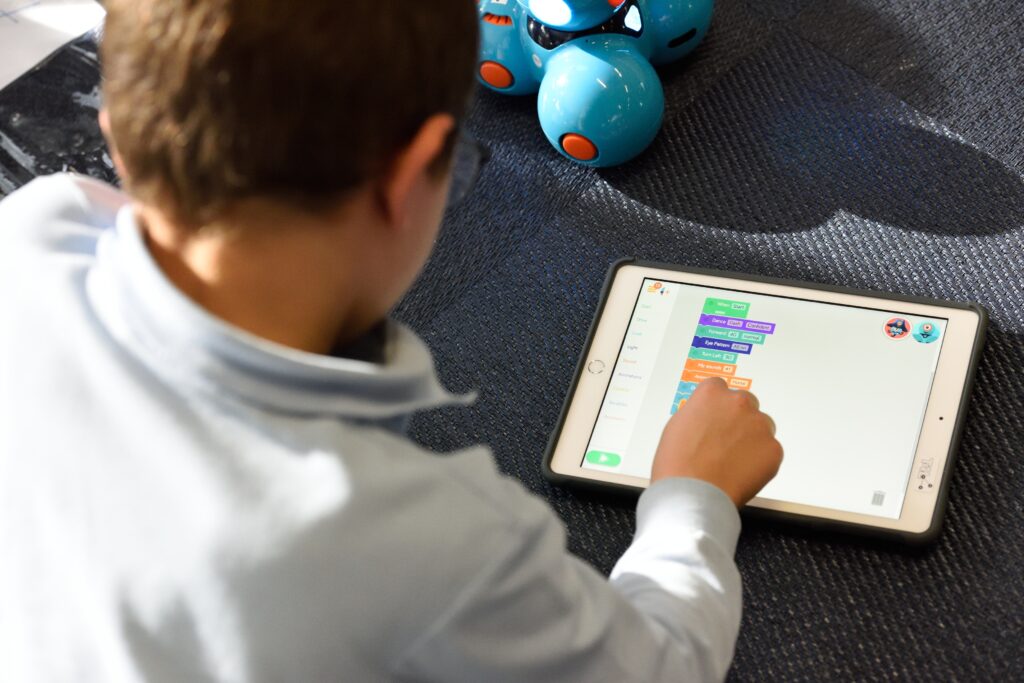We understand that parents nowadays can face dilemmas and difficulties regarding a child’s internet use. Introducing your child to the internet is not a bad thing, but there are multiple aspects to keep in mind. How can children make the most of the internet while staying protected? Let’s explore the necessary steps to guide your child’s internet safety and give parents peace of mind.
Importance of age
The age of your child plays a crucial role in their online journey. Younger children may lack understanding of the potential internet dangers and be more vulnerable to uncensored content, while older children may seek more independence and freedom. Setting age-appropriate boundaries and restrictions is vital. Regularly reassess and adjust these boundaries as your child grows and matures, finding a balance between independence and online safety.
Start slow
To ensure your child’s internet safety, it’s advisable not to grant them full control right away. Begin slowly, gradually incorporating the online world into their lives. For instance, allow them to explore a few websites at a time and gradually expand their access as they become more comfortable with technology. This gradual approach to child’s internet safety not only helps in managing potential risks, but also allows you to monitor their internet use and gradually introduce more content as they become responsible and mature.

Understanding Internet risks
Having awareness of potential risks is a crucial step in safeguarding your child. While an in-depth investigation is unnecessary, reading a few articles about dangerous websites and scams can greatly assist in protecting your child and their personal information online. Common risks include cyberbullying, identity theft, and exposure to inappropriate content.
Setting up restrictions
Before handing out the device to your child, you can also set up parental controls on devices and internet browsers to restrict access to certain websites or apps that may not be appropriate for your child’s age. This will ensure that the child will not open these websites when they are using the device.
Informing children about dangers
Once you’ve learned about risks and dangers online, you can educate your child. The amount of information you give depends on the age of your child and their level of understanding. For younger children, it may be helpful to use simple language and examples they can relate to, while older children may benefit from more detailed discussions about privacy settings, cyberbullying and consequences.
Make sure to deliver this information without scaring or overwhelming your child. It is important to emphasize that they can always come to you if they have any questions or concerns about their online activities.
First, we recommend going through ways they can be tricked, possible baits, signs of dangerous or risky websites or behavior, and how to report any suspicious activity. This will make them prepared and able to determine risky situations on their own.
Second, it’s important to emphasize the importance of keeping personal information private and not sharing it with strangers online. Encourage them to use strong passwords and to log out of accounts when finished using them. By teaching children these basic principles, they can stay safe while enjoying the benefits of the internet.

Maintaining open communication
At the end of the day, open communication is key to building trust and support with your child in regard to anything, including their internet use. Encourage your child to come to you with any questions or concerns they may have about their internet experience. Make it clear that they can talk to you about anything, without fear of judgment or punishment. This will help to build trust and ensure that your child feels comfortable coming to you for guidance. It is important to not only be honest, but also be willing to listen to what the child might want to share. With patience and guidance, you can help your child develop healthy online habits that will benefit them for years to come.
Something we believe is important is the way you talk about the internet and its possibilities. Remember that presenting the internet as an overwhelmingly dangerous place is unlikely to lead to a safe and enjoyable experience for your children.
Setting boundaries and limits
Of course, being the parent, you should set certain boundaries and limits. For example, you may set limits on screen time or establish rules for bedtime, considering your child’s age. Clearly communicate these boundaries and also respect their personal boundaries. As mentioned earlier, periodically reassess and adjust these boundaries as your child grows and matures.
Monitoring their activity
Monitoring a child’s activity is a great way of having some control over their online experience. There are multiple ways of doing this. If your child uses their own or your device only at home, you can position screens where you can observe their activity. Allow your child to use the device independently while occasionally checking on what they are doing. Alternatively, you can use special apps that share their activity with you, allowing you to track the apps they use, the time spent on each app, and even set usage limits. An example of an app like this is the Google Family Link.

Using a VPN
In addition to setting boundaries and restrictions, using a VPN (virtual private network) like ForestVPN can provide an extra layer of protection for your child’s online activity. ForestVPN shields their device and safeguards their personal information from hackers or cybercriminals in case they accidentally access dangerous websites or connect to unsecured public Wi-Fi networks. With ForestVPN’s secure and encrypted connection, your child’s online presence remains anonymous, reducing the risk of unauthorized access to their data.
Conclusion
In conclusion, when it comes to ensuring your child’s internet safety, guiding them through the online world may seem daunting. However, with open communication, knowledge of potential risks, setting boundaries, and utilizing tools such as VPNs, you can effectively safeguard your child and ensure they have a safe and enjoyable internet experience.
